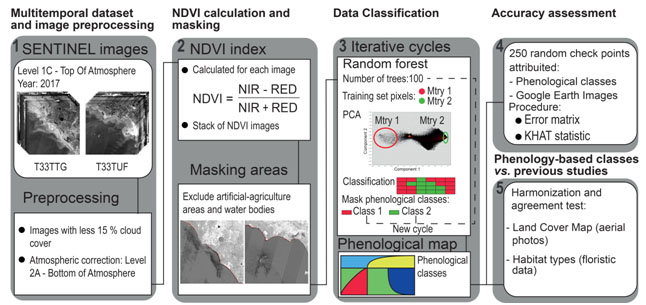
Coastal areas harbor the most threatened ecosystems on Earth, and cost-effective ways to monitor and protect them are urgently needed, but they represent a challenge for habitat mapping and multi-temporal observations. The availability of open access, remotely sensed data with increasing spatial and spectral resolution is promising in this context. Thus, in a sector of the Mediterranean coast (Lazio region, Italy), we tested the strength of a phenology-based vegetation mapping approach and statistically compared results with previous studies, making use of open source products across all the processing chain. We identified five accurate land cover classes in three hierarchical levels, with good values of agreement with previous studies for the first and the second hierarchical level. The implemented procedure resulted as being effective for mapping a highly fragmented coastal dune system. This is encouraging to take advantage of the earth observation through remote sensing technology in an open source perspective, even at the fine scale of highly fragmented sand dunes landscapes.
https://www.mdpi.com/2072-4292/11/12/1506/htm

Commenta per primo